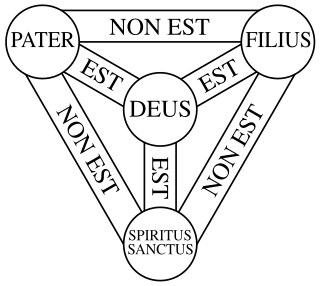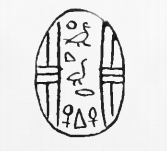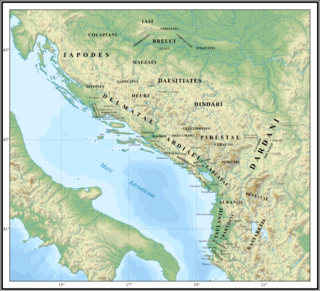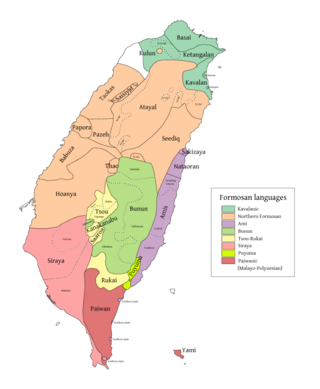
A manuscript was, traditionally, any document written by hand or typewritten, as opposed to mechanically printed or reproduced in some indirect or automated way. More recently, the term has come to be understood to further include any written, typed, or word-processed copy of an author's work, as distinguished from the rendition as a printed version of the same.

Yule is a winter festival historically observed by the Germanic peoples that was incorporated into Christmas during the Christianisation of the Germanic peoples. In present times adherents of some new religious movements celebrate Yule independently of the Christian festival. Scholars have connected the original celebrations of Yule to the Wild Hunt, the god Odin, and the heathen Anglo-Saxon Mōdraniht. The term Yule and cognates are still used in English and the Scandinavian languages as well as in Finnish and Estonian to describe Christmas and other festivals occurring during the winter holiday season. Furthermore, some present-day Christmas customs and traditions such as the Yule log, Yule goat, Yule boar, Yule singing, and others may have connections to older pagan Yule traditions.

The Nibelungenlied, translated as The Song of the Nibelungs, is an epic poem written around 1200 in Middle High German. Its anonymous poet was likely from the region of Passau. The Nibelungenlied is based on an oral tradition of Germanic heroic legend that has some of its origin in historic events and individuals of the 5th and 6th centuries and that spread throughout almost all of Germanic-speaking Europe. Scandinavian parallels to the German poem are found especially in the heroic lays of the Poetic Edda and in the Völsunga saga.

Cædmon is the earliest English poet whose name is known. A Northumbrian cowherd who cared for the animals at the double monastery of Streonæshalch during the abbacy of St. Hilda, he was originally ignorant of "the art of song" but learned to compose one night in the course of a dream, according to the 8th-century Christian historian and saint Bede. He later became a zealous monk and an accomplished and inspirational Christian poet. He is venerated as a saint in the Eastern Orthodox Church, Roman Catholicism and Anglicanism, with a feast day on 11 February.

Old High German is the earliest stage of the German language, conventionally identified as the period from around 500/750 to 1050. Rather than representing a single supra-regional form of German, Old High German encompasses the numerous West Germanic dialects that had undergone the set of consonantal changes called the Second Sound Shift.

A rune is a letter in a set of related alphabets, known as runic rows, runic alphabets or futharks, native to the Germanic peoples of the 1st millennium and beyond. Runes were used to write Germanic languages before they adopted the Latin alphabet, and for specialised purposes thereafter. In addition to representing a sound value, runes can be used to represent the concepts after which they are named (ideographs). Scholars refer to instances of the latter as Begriffsrunen. The Scandinavian variants are also known as fuþark, or futhark; this name is derived from the first six letters of the script, ⟨ᚠ⟩, ⟨ᚢ⟩, ⟨ᚦ⟩, ⟨ᚨ⟩/⟨ᚬ⟩, ⟨ᚱ⟩, and ⟨ᚲ⟩/⟨ᚴ⟩, corresponding to the Latin letters ⟨f⟩, ⟨u⟩, ⟨þ⟩/⟨th⟩, ⟨a⟩, ⟨r⟩, and ⟨k⟩. The Anglo-Saxon variant is known as futhorc, or fuþorc, due to changes in Old English of the sounds represented by the fourth letter, ⟨ᚨ⟩/⟨ᚩ⟩.
Old Irish, also called Old Gaelic, is the oldest form of the Goidelic/Gaelic language for which there are extensive written texts. It was used from c. 600 to c. 900. The main contemporary texts are dated c. 700–850; by 900 the language had already transitioned into early Middle Irish. Some Old Irish texts date from the 10th century, although these are presumably copies of texts written at an earlier time. Old Irish is forebear to Modern Irish, Manx and Scottish Gaelic.

Anglo-Saxon runes or Anglo-Frisian runes are runes that were used by the Anglo-Saxons and Medieval Frisians as an alphabet in their native writing system, recording both Old English and Old Frisian. Today, the characters are known collectively as the futhorc from the sound values of the first six runes. The futhorc was a development from the older co-Germanic 24-character runic alphabet, known today as Elder Futhark, expanding to 28 characters in its older form and up to 34 characters in its younger form. In contemporary Scandinavia, the Elder Futhark developed into a shorter 16-character alphabet, today simply called Younger Futhark.
Middle Persian literature is the corpus of written works composed in Middle Persian, that is, the Middle Iranian dialect of Persia proper, the region in the south-western corner of the Iranian plateau. Middle Persian was the prestige dialect during the era of Sasanian dynasty. It is the largest source of Zoroastrian literature.

Migration Period art denotes the artwork of the Germanic peoples during the Migration period. It includes the Migration art of the Germanic tribes on the continent, as well the start of the Insular art or Hiberno-Saxon art of the Anglo-Saxon and Celtic fusion in Britain and Ireland. It covers many different styles of art including the polychrome style and the animal style. After Christianization, Migration Period art developed into various schools of Early Medieval art in Western Europe which are normally classified by region, such as Anglo-Saxon art and Carolingian art, before the continent-wide styles of Romanesque art and finally Gothic art developed.

The Shield of the Trinity or Scutum Fidei is a traditional Christian visual symbol which expresses many aspects of the doctrine of the Trinity, summarizing the first part of the Athanasian Creed in a compact diagram. In late medieval Europe, this emblem was considered to be the heraldic arms of God, and of the Trinity.
The Texandri were a Germanic people living between the Scheldt and Rhine rivers in the 1st century AD. They are associated with a region mentioned in the late 4th century as Texandria, a name which survived into the 8th–12th centuries.
Vatteluttu or Vattezhuthu was an alphasyllabic writing system of south India and Sri Lanka used for writing the Tamil and Malayalam languages. This script is the sister of the Pallava script which was once in development in Southeast Asia.

The Bodiocasses or Baiocasses were an ancient Gallic tribe of the Roman period. They were a tribal division of the civitas of the Lexovii, in the Roman province of Gallia Lugdunensis.

The Manichaean script is an abjad-based writing system rooted in the Semitic family of alphabets and associated with the spread of Manichaeism from southwest to central Asia and beyond, beginning in the third century CE. It bears a sibling relationship to early forms of the Pahlavi scripts, both systems having developed from the Imperial Aramaic alphabet, in which the Achaemenid court rendered its particular, official dialect of Aramaic. Unlike Pahlavi, the Manichaean script reveals influences from the Sogdian alphabet, which in turn descends from the Syriac branch of Aramaic. The Manichaean script is so named because Manichaean texts attribute its design to Mani himself. Middle Persian is written with this alphabet.
A biblical manuscript is any handwritten copy of a portion of the text of the Bible. Biblical manuscripts vary in size from tiny scrolls containing individual verses of the Jewish scriptures to huge polyglot codices containing both the Hebrew Bible (Tanakh) and the New Testament, as well as extracanonical works.

Qareh Khawoserre was possibly the third king of the Canaanite 14th Dynasty of Egypt, who reigned over the eastern Nile Delta from Avaris during the Second Intermediate Period. His reign is believed to have lasted about 10 years, from 1770 BC until 1760 BC or later, around 1710 BC. Alternatively, Qareh could have been a later vassal of the Hyksos kings of the 15th Dynasty and would then be classified as a king of the 16th Dynasty.

The Albanoi were an Illyrian tribe. They were possibly first mentioned by Hecataeus of Miletus under the name Abroi. Ptolemy is the first author who mentions them under the name Albanoi. Their central settlement was called Albanopolis (Ἀλβανόπολις) and was located roughly between the Mat and Shkumbin rivers, in central Albania. The archaeological site of Zgërdhesh has been identified as the likely location of Albanopolis. Stephanus of Byzantium who reproduced Hecataeus added an entry for another settlement named Arbon in Illyria whose inhabitants were called Arbonioi or Arbonites. Another Arbon was recorded by Polybius. John of Nikiû wrote in the 7th century CE about a people known as Arbanitai in the Greek translation of the manuscript.

Sirayaic languages is one of the sub-branches of the Formosan branch, under the Austronesian languages family. Both Blust (1999) and Li (2010) considers Proto-Siraya belongs to East Formosan languages, along with Kavalanic and Amis languages.
Pelia in Greek mythology is a minor Cypriot figure, kin to Adonis, who plays a role in a minor myth. Her story is attested in the works of Servius, a Latin grammarian of the fifth century.













